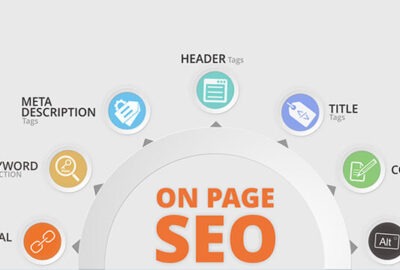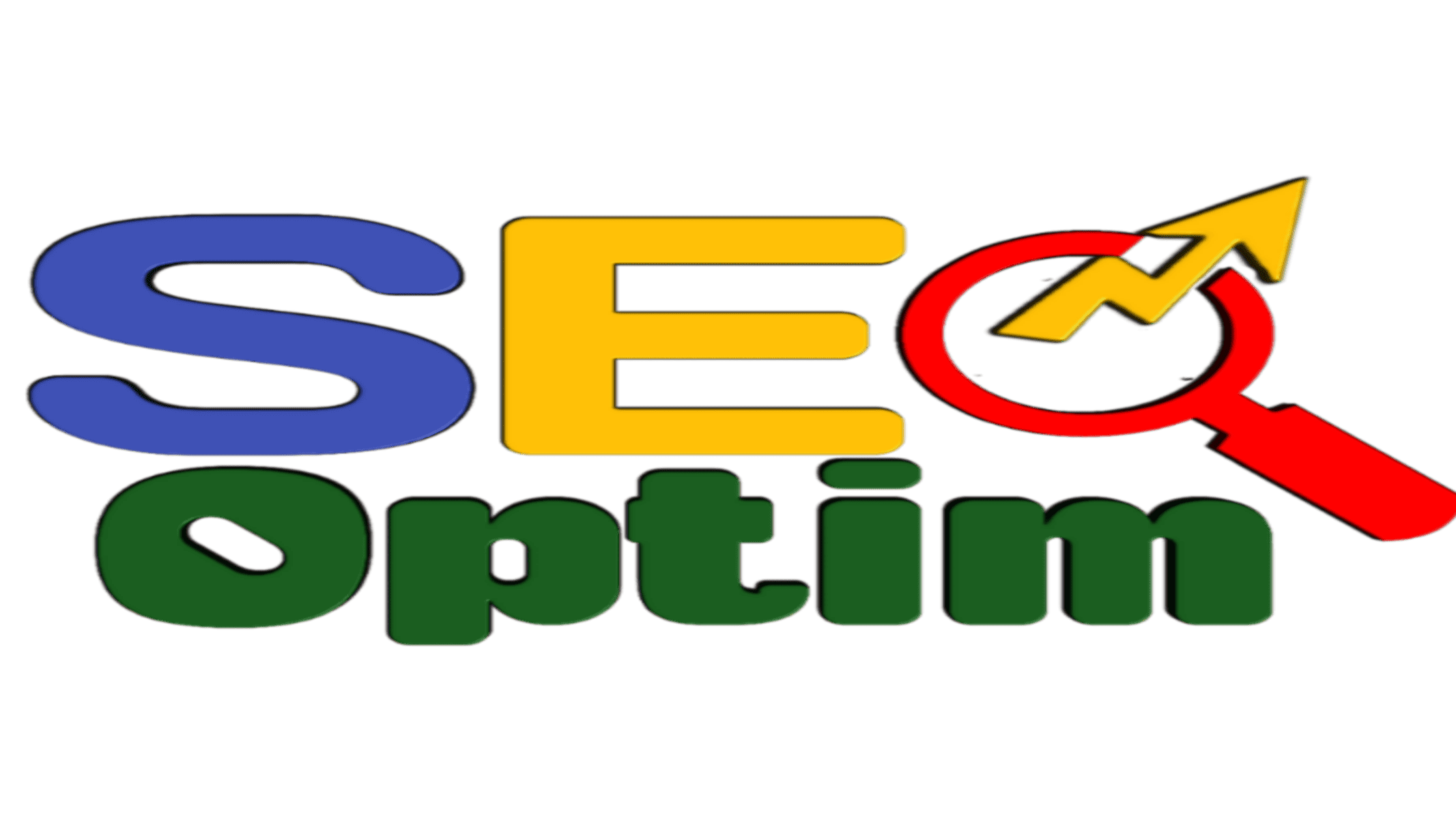Welcome to the world of On-page SEO, where the magic of optimizing your website to rank highly in search engine results pages (SERPs) begins. In this comprehensive guide, we’ll unravel the intricacies of On-page SEO, exploring the vital techniques and strategies that can transform your web pages into search engine magnets. Whether you’re a beginner digital marketer or a novice website owner, understanding the nuances of On-page SEO is crucial for boosting your online visibility and driving organic traffic.
In the upcoming sections, we’ll delve into the core elements of On-page SEO, uncovering the secrets behind keyword optimization, content quality, user experience, and technical enhancements. You’ll learn how to craft compelling meta titles and descriptions, create engaging and relevant content, optimize images and multimedia elements, and enhance your website’s overall user interface.
Let’s embark on this On-page SEO guide together and unlock the full potential of your website’s performance, improve user satisfaction, and climb the search engine rankings.

What is on-page SEO?
On-page SEO refers to optimizing individual pages on your website to rank higher in search engine results pages (SERPs) for relevant queries. This process includes writing keyword-rich meta descriptions and titles, using internal linking techniques within your site, and ensuring content can be read easily by search engines and visitors alike.
On-page SEO refers to optimizing invisible elements to visitors, like title tags and other HTML code used by search engines to understand a page. On-page SEO is one of the three core components of a comprehensive digital marketing strategy alongside off-page and technical SEO; all three must work in harmony if you hope to rank highly for targeted keywords without on-page optimizations – it’s vital for ranking highly for target keywords without on-page optimization! Optimize SEO according to audience search intent for the best results instead of just following an algorithmic formula!
Search engine optimization (SEO) requires hard work and can be challenging to keep up with best practices. But with proper practice, it’s possible to achieve mastery over on-page SEO efforts and see an excellent return on investment from them.
Why SEO on-page and off-page are different?
In the vast world of Search Engine Optimization (SEO), two fundamental strategies reign supreme: On-page SEO and Off-page SEO. While they aim to enhance a website’s visibility and drive organic traffic, these approaches diverge in focus and execution.
On-page SEO: The foundation of your website
On-page SEO refers to the optimization efforts made directly on your website’s pages. It encompasses various techniques, from keyword research and optimization to creating high-quality content, improving site speed, and ensuring a seamless user experience. On-page SEO enhances the elements that users and search engines see and interact with directly on your website.
Critical aspects of on-page SEO:
- Keyword Optimization: Careful selecting and placing relevant keywords within your content, meta titles, meta descriptions, and headers.
- High-Quality Content: Creating valuable, informative, and engaging content that resonates with your audience and solves their queries.
- User Experience: Ensuring intuitive navigation, mobile-friendliness, and fast loading times to enhance user satisfaction.
- Meta Tags: Crafting compelling meta titles and meta descriptions that accurately represent the page’s content and entice users to click.
Off-page SEO: Building authority and credibility
In contrast, Off-page SEO revolves around activities conducted outside your website to boost its credibility and authority in the eyes of search engines. Off-page SEO primarily concerns establishing your website’s reputation, relevance, and trustworthiness.
Critical aspects of off-page SEO:
- Backlinks: Acquiring high-quality, relevant backlinks from authoritative websites, indicating to search engines that your content is valuable and trustworthy.
- Social Signals: Leveraging social media platforms to amplify your content, increase brand awareness, and foster engagement, thus indirectly influencing your website’s search engine ranking.
- Online Mentions: Building your online presence by getting mentioned in reputable publications, forums, and directories, showcasing your expertise and credibility in your industry.
The synergy between on-page and off-page SEO
While On-page and Off-page SEO operate independently, they are deeply interconnected. A well-optimized website (On-page SEO) often attracts more natural backlinks and social shares (Off-page SEO) due to its high-quality content and user-friendly design. Conversely, Off-page SEO efforts can drive more traffic to a website, where the impact of On-page optimizations becomes evident.
On-page SEO techniques: The art of online visibility
In the vast digital landscape, your website’s visibility hinges on a combination of factors directly impacting how search engines perceive and rank your content. This comprehensive guide explores the core On-Page SEO techniques that will elevate your content, ensuring it resonates with both search engines and your target audience.
Write non-plagiarized content:
Originality is the cornerstone of effective On-Page SEO. Craft compelling and unique content that sets your website apart from the competition, establishes credibility, and avoids penalties from search engines for duplicate material. Plagiarism-free content enhances your credibility and helps in better search engine rankings.
Content aligns with search intent:
Understanding your audience’s search intent is pivotal. Tailor your content to align with what users are seeking. Providing the right content can significantly improve user engagement, longer page visits, and conversion rates, whether informational, navigational, or transactional intent.
Add keywords strategically:
Keywords are the foundation of On-Page SEO. Research relevant keywords and strategically integrate them into your content, ensuring a natural flow. Place keywords strategically in titles, headings, body paragraphs, and meta tags. Avoid keyword stuffing; focus on delivering valuable information around your chosen keywords.

Structure your article with subheadings (H1-H6):
Break down your content into clear, hierarchical subheadings (H1 to H6). This enhances readability and helps search engines comprehend the structure of each section, improving your chances of ranking higher.
Write an optimized meta title:
Your meta title is users’ first impression of your content on search engine result pages (SERPs). Craft an enticing and concise title, incorporating primary keywords to capture attention and encourage clicks. Keep it within the recommended character limit to ensure visibility.
Write an optimized meta description:
The meta description serves as a summary of your content beneath the meta title on SERPs. Create a compelling, informative, and relevant description that encourages users to visit your site. Incorporate keywords naturally, providing a preview of what your content offers.
Optimize images:
Images enhance visual appeal and user engagement. Optimize images by compressing file sizes, choosing descriptive file names, and adding informative alt tags. These practices improve website speed, accessibility, and overall user experience.
Optimized URL structure:
A clean and concise URL structure is essential. Create user-friendly URLs that reflect the content’s topic. Avoid long, convoluted URLs with random characters. A clear URL structure improves user trust and search engine indexing.
Use internal links:
Strategically link your content with relevant internal pages on your website. Internal links facilitate easy navigation, distribute link equity, and establish thematic relationships between your articles. Engage users by guiding them to related topics within your website.
Use external links:
Citing authoritative external sources enriches your content. Include outbound links to reputable websites, enhancing your content’s credibility and context. External links demonstrate research, providing users with additional valuable resources and information.
Build trust with expertise on the topic:
Become a trusted authority in your field. Demonstrate your expertise in the field by delivering accurate, insightful, and trustworthy information. Building trust among your audience establishes your website as a reliable source, sharing your posts and encouraging return visits and positive reviews.
Mastering these On-Page SEO techniques is essential for enhancing your website’s visibility, credibility, and user experience. By implementing these strategies, you’ll meet search engine requirements and create a compelling online presence that resonates with your audience.
Advanced on-page SEO factors
In the realm of On-Page SEO, mastering the basics is crucial, but understanding the advanced nuances can catapult your website to new heights of visibility and relevance. In this section, we delve into the intricacies of advanced On-Page SEO factors, exploring cutting-edge techniques and strategies that go beyond keyword optimization and content quality.
Though on-page SEO may appear complex and daunting at times, each factor serves a single purpose – to boost the organic search performance of your website.
Page speed optimization
Page speed is one of the critical performance factors that can radically transform your search engine rankings and play an essential part in user experience and increasing organic traffic and conversions.
When your website takes too long to load, it can create a frustrating user experience and turn visitors off completely. Therefore, optimizing its loading speed is crucial to providing visitors with an improved user experience and remaining competitive in the marketplace.
As Google prioritizes sites that load quickly while providing good user experiences, site speed has become essential to SEO success.
Google PageSpeed Insights makes checking your site’s loading speed easy with their PageSpeed Insights tool, providing scores for desktop and mobile visitors and suggestions on improving its speed. For a more detailed analysis of your site speed, use tools such as SEO clarity PageSpeed Analysis’s Lighthouse tool, which analyses it and offers valuable insights like Largest Contentful Paint and Cumulative Layout Shift.
Content optimization
Content optimization is a core part of any SEO strategy, as without it, your web pages would be hard to find and likely wouldn’t rank as highly in search engines. It involves formatting information on your web pages so it can be easily indexed and classified by search engines; additionally, it includes relevant keywords within content, using structured URLs, and providing links to additional pages on your site that give more details about a topic.
To optimize content for SEO, it’s best to conduct keyword research to identify those most pertinent to your business and audience. Doing this will enable you to produce relevant and valuable posts that attract more visitors; tools such as DemandJump can help identify these essential keywords for you.
Once you have your list of keywords, use it to include them in page headers and title tags to improve the search engine optimization of your content. Additionally, ensure your material has lots of paragraph breaks and bullet point lists so readers can still easily read it.
Use schema markup to obtain rich snippets.
Schema markup is a type of code designed to help search engines interpret your page content more accurately while simultaneously creating rich snippets – additional pieces of data displayed alongside search results, which include ratings, prices, and reviews – in search results pages. Rich snippets can increase traffic to your page and click-through rates simultaneously.
One widespread use for schema markup is to create a frequently asked questions (FAQ) section. This can allow visitors to quickly and efficiently find the answers they need, leading to improved user experience and higher search engine rankings. However, schema markup alone doesn’t guarantee rich results, as search engines still decide what appears in their results based on various factors influencing what will show up there.

Conclusion
Mastering the art of On-page SEO is the cornerstone of a successful online presence. As we wrap up our exploration of On-page SEO, it’s essential to remember that every tweak, every carefully chosen keyword, and every engaging piece of content contribute to a seamless and enjoyable user journey.
By paying attention to the details – crafting compelling meta tags to creating informative and visually appealing content – you pave the way for higher search engine rankings, increased organic traffic, and, ultimately, a thriving online business. Remember that search engines continually evolve, so staying updated with the latest trends and best practices is critical to maintaining your competitive edge.
As you implement the strategies and techniques discussed in this guide, remember that patience and consistency are your allies in SEO. Results may not be instantaneous, but the long-term benefits of a well-optimized website are undeniable. So, apply what you’ve learned and watch your website soar to new heights in the digital landscape.
Subscribe to our newsletter!

Edwinorige
says:keywords that lure viewers that precisely know they want and are prepared to buy your wares or services. It’s particularly useful for digital shops, businesses in the B2B market, and service-offering enterprises.
admin
says:Keywords help any kind of business, they are the key to business optimization.
Elvin
says:I got this website from my pal who informed me concerning this site and
at the moment this time I am browsing this site and
reading very informative posts here.
admin
says:Hi Elvin,
Thanks for the comment! This is the goal: to provide quality information so people understand the importance of SEO.